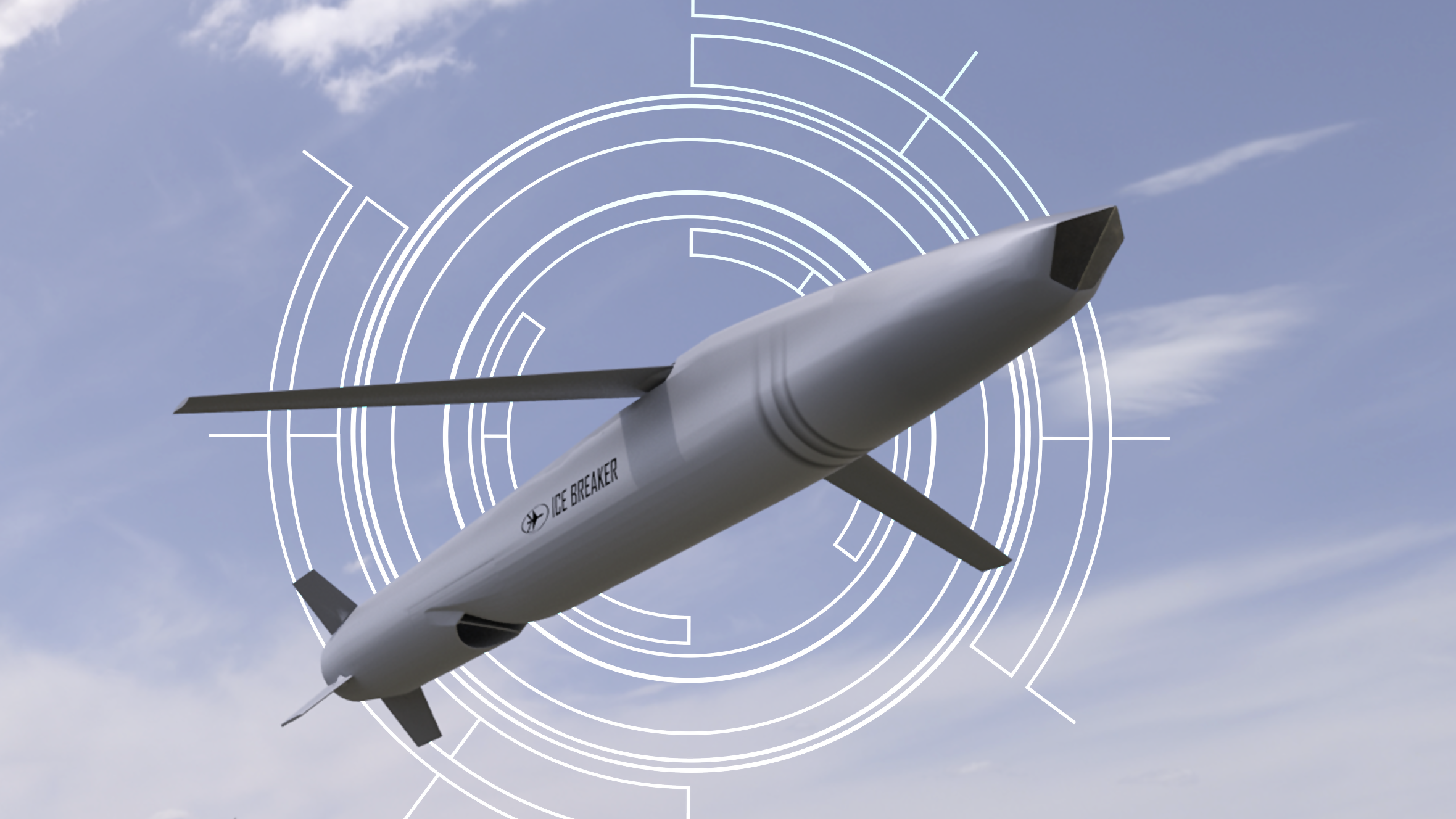
Concept art for Rafael’s new Ice Breaker missile. (Rafael)
TEL AVIV: Israeli firm Rafael has unveiled a new long-range strike missile, one the company bills as having built-in autonomous capabilities, a range of 300 KM — and, if Rafael gets its way, an American corporate partner.
The company is looking for a US partner to jointly manufacture the new Ice Breaker missile design, which the company hopes to see launched from fighter aircraft, helicopters and UAV’s.
“There’s no question that we see potential with major defense players, whether it’s Lockheed, Raytheon, Boeing or the like — we understand there is great interest in what we have developed and are unveiling here,” a spokesperson told Breaking Defense.
Rafael claims the new weapon, which will be formally unveiled at next week’s Farnborough Air Show outside London, travels at “high subsonic speeds” and is resilient against electronic attack. The weapon is effectively an air-launched version of the Sea Breaker weapon the company made public last year; Breaking Defense reported at the time that Rafael was considering an air-launched variant of the missile.
The Ice Breaker is four meters long and weighs 770 lbs, including a 250 lb. penetration, blast and fragmentation warhead, per the company. According to Ofer Weinberg, a Rafael executive, an F-16 can carry four such missiles and an F-15 can carry five. Weinberg added that the weapon comes with stealth materials that should make it extremely difficult for defensive systems to pick up.
Israeli industry sources told Breaking Defense that a co-production agreement isn’t just a nice-to-have, but is in fact a must in order to ensure international sales of the new missile.
“While the US armed forces are a huge client, [Rafael’s] eyes are focused on international clients that use US made aerial platforms,” one industry source said.
And there is another financial benefit: getting a co-production deal means that Foreign Military Financing dollars — money given by Washington to Jerusalem that can primarily be used to buy American weapons — would be in play.
“The portion of the FMF funds Israel is getting from the US that can be exchanged to Israeli currency is lowered each year until it gets to zero in a few years,” the source noted. “Production of such an advanced missile in the US will enable Israel to purchase it using FMF dollars.”
A senior Rafael official was not ready to elaborate on any actual discussions with the American companies but said that the missile is “without any doubt a system that will be brought up in our mutual work. The missile is designed in a modular way for the ease of production by other companies.”
Both Lockheed and Raytheon have existing working relationships with Rafael.
Recently, Lockheed and Rafael began negotiations about the possible creation of a joint venture for US production of the Israeli company’s Spike NLOS missile. This will allow its integration onto Apache helicopters operated both by the US Army and international customers. The two have also signed a Principles of Cooperation agreement under which the two companies will work to support the development and fielding of a defensive ground-based laser weapon system for Israel.
Rafael and Raytheon, meanwhile, are teamed on the Israeli company’s two very advanced air defense systems, the Iron Dome and David’s Sling.






















